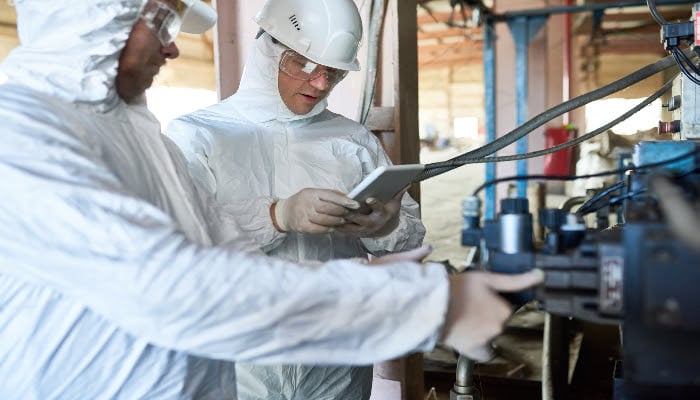When it comes to workplace safety, there is no such thing as being too careful—in fact, not taking the time to do a thorough safety inspection before work can lead to some serious injuries for you and your employees.
Unfortunately, not every safety hazard is obvious. There are “invisible” safety risks that can cause workplace injuries and health-related problems, as well as hidden dangers that can lead to further injury, lost productivity, and other serious accidents. Here are four hidden hazards that are preventable with the proper safety inspections.
- Fatigue
- Poor posture and repetitive strain
- Emotional trauma
- Poor indoor air quality (IAQ)
Fatigue
According to OHS Online, a survey by the National Safety Council reported that 90% of U.S. employers had been negatively impacted by tired employees, with half of those surveyed saying that they’ve had incidents of employees falling asleep on the job.
In a survey led by the National Survey Council, data revealed that 13% of workplace injuries could be attributed to fatigue. According to the report, 97% of workers have at least one workplace fatigue risk factor, and over 80% have two or more. And more than 37% of employees are sleep-deprived.
Poor Posture & Repetitive Strain
Working in the same position every day can cause repetitive strain, mainly if the worker uses improper posture to perform their tasks. This can result in various physical conditions that can increase the risk of accidents in the workplace, including back pain, muscle soreness, and even varicose veins.
Emotional Trauma
Workplace safety encompasses physical, emotional, and mental health. It goes beyond physical injuries or illness. Mental health issues can develop in the workplace, causing stress and anxiety, keeping workers from performing, or leading them into isolation.
Incidents like bullying and harassment can cause emotional havoc, resulting in reduced morale, falling productivity, and increased turnover. When a person doesn't feel safe in their workplace, it can lead to increased absenteeism. It can also impact their focus and concentration and potentially lead to accidents.
Poor Indoor Air Quality
Poor IAQ can lead to various health issues, including respiratory problems, headaches, eye irritation, rashes, allergic reactions, and sinus infections. Employees can help monitor this hazard by being mindful of the importance of maintaining good indoor air quality and recognizing the causes of poor IAQ. Employees should also report any unpleasant smells, visible leaks, or water spots that indicate HVAC-related issues. Significant contributors of poor IAQ include:
- Poor HVAC quality or maintenance
- Extreme temperatures (too hot or too cold)
- Construction or renovation dust
- Dampness and mold
- Outdoor traffic exhaust and smoke
- Toxic cleaners and air fresheners
- Off-gassing from carpets, paint, and furniture
Employees should also be trained to record any health symptoms that may be associated with poor IAQ.
Takeaway
To avoid these hidden workplace hazards, educate your workforce about how to detect and prevent them. Implement routine procedures, including the use of checklist inspections. With The Checker, you can ensure nothing is overlooked. All of our checklists are available as software or Checklist Books. Feel free to browse our checklist library to find the inspections you want.











